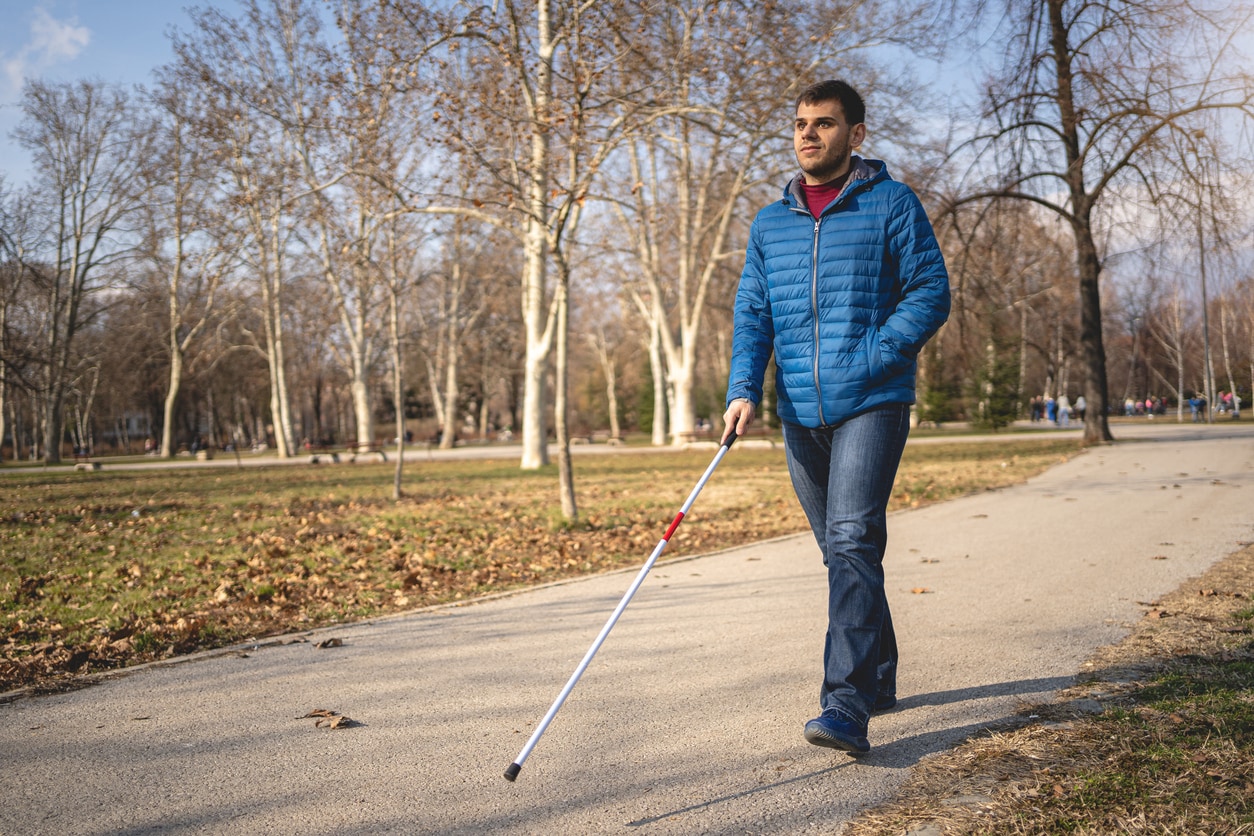At a glance
Do you know someone with a disability? That someone could be you, your spouse, your parent, a neighbor, or a colleague at work. One in four adults in the United States reports having some form of a disability.

What is a Disability?
A disability can be defined as a physical or mental impairment that greatly limits one or more major life activities including eating, breathing, walking, working, or taking care of one's self. A disability may be genetic, acquired due to an injury or illness, occur at any time across the lifespan, be permanent or temporary, or experienced as part of the aging process. Some disabilities are 'visible' or able to be more easily detected because there are physical characteristics that denote a potential impairment, such as the use of a wheelchair, white cane, service animal, or cochlear implant. However, many disabilities, including those associated with mental health, autoimmune and neurological conditions, or chronic pain, can be 'invisible' or less apparent to those around the person with the disability. Thus, it's important to enhance awareness and understanding about living with a disability in order to not perpetuate stigma, reinforce false stereotypes for those that do have disabilities, and promote the belief that having a disability is some type of shortcoming. For many, the disability itself is not the main challenge; instead, it's the environments that they live, learn, work, worship, and play that create the biggest difficulties. In sum, it's the attitudes of others and their surroundings that are not always supportive and create limits for their personal independence, health outcomes, and overall success.
What is Disability Inclusion?
Disability inclusion ensures that people with disabilities have the same opportunities as everyone else to go to school or work, attend faith-based institutions, access quality healthcare services, and public health programs, and actively engage within their communities and among their loved ones. This necessitates having appropriate programs, sufficient policies and systems, and accessible environments in place to advance health promotion for people with disabilities to achieve optimal health and promote independent living within their communities. Common barriers faced by people with disabilities include:
- Attitudinal barriers, or how society observes and perceives people with disabilities (e.g., stereotypes, stigma, or prejudice).
- Communication barriers, or how people with disabilities provide, understand, and receive information (e.g., lack of videos with captions, easy-to-read materials, large print and Braille versions; and low color contrast within visual formats).
- Physical barriers, or how well people with disabilities can navigate and move within different environments (e.g., steps without ramps, elevators, or lifts; absence of automatic doors; high, static shelving; and narrow doorways and aisles).
- Programmatic barriers, or how effective the intent and delivery of healthcare services or health promotion programs are for people with different types of disabilities (e.g., inconvenient scheduling; lack of accessible medical equipment like weight scales, examining tables, and mammography screening equipment).
- Transportation barriers, or how adequate transportation and related physical infrastructure connects and supports people with disabilities to, as independently as possible, travel within their communities (e.g., limited or inconvenient locations for public transit, lack of curb cuts, limited connectivity of sidewalks, and inaccessible signage and wayfinding).
CDC Commitment to Improve Health for All
In collaboration with our partners, CDC strives to amplify the enduring legacy of the Americans with Disabilities Act (ADA) and accomplish national goals with initiatives intended to ensure that people with disabilities have seamless access to healthcare services and public health programs that support health-enhancing behaviors. CDC supports using data and public health strategies to address health outcomes for people with disabilities and improve health for all.
Recognition of ADA Anniversary
On July 26, 2024, we recognize the enactment of the ADA. The ADA provides needed support and protections for people with disabilities in different aspects of public life, such as employment, education, health care, telecommunications, and transportation. It's been 34 years since the ADA was signed into law and summoned a national commitment to reducing barriers impeding people with disabilities from full integration into American life and moving towards improving health for everyone across our nation.
Each of us can find ways to honor and celebrate the ADA anniversary. Together, we can support people with disabilities with attaining their optimal health!
